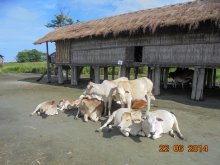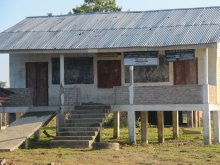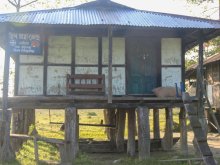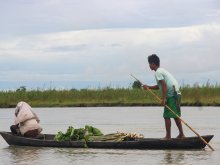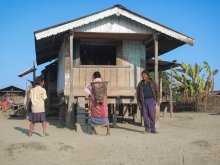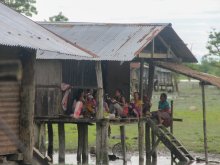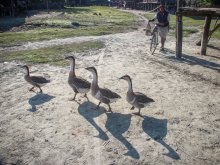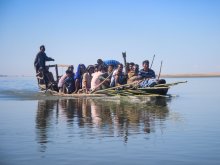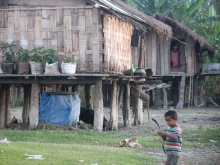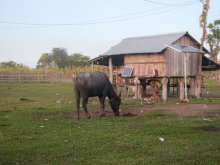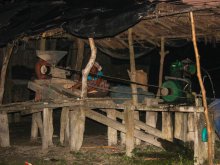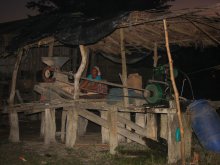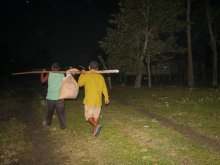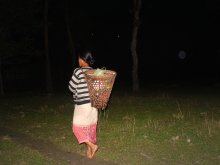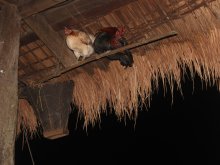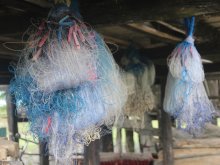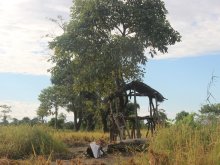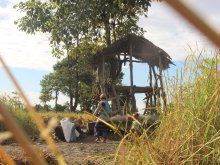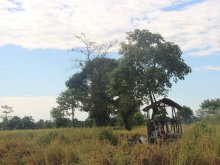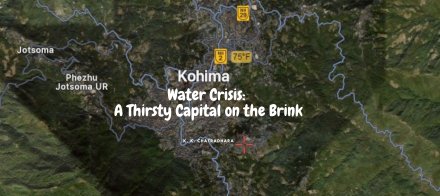Brief History of Laika-Dodhia
Laika-Dodhia forest village is situated about 12 KM north of the district headquarter of Tinsukia and Chabua town of Dibrugarh District in upper Assam into the heart of Feral horse fame Dibru-Saikhowa National Park, engulfed by the mighty Brahmaputra in the north and river Dibru in the west. Laika Comprises of three villages namely Laika Rigbi, Laika Pasidiya,and Laika Pomua. Dodhia forest village is under jurisdiction of Dibrugarh district of Assam which comprises of four villages namely Dodhia Mohmora, Dodhia Charisuti, Dodhia Kuli Gaon and Dodhia Tengabari. These two large villages are the homes of “Schedule Tribes” with 10-12 thousand population which belongs to Mising Community, one of the second largest tribal population of Assam, India.
Initially, the Dodhia village was situated near Dibrugarh town under the Romuria Moza called “Oakland” and Laika village was situated in “Murkong Selek” of present day Jonai. The great earthquake of 1950 devasted the whole area, as a result, then Govt. of Assam rehabilitated Laika forest village under Saikhowa range in the year 1950 and Dodhia forest village in 1954 in Dibru range of Dibru reserve forest as a forest dweller.
Challenges
Soon after the rehabilitation all forms of Govt. development schemes were carried out and executed in the villages. In the year 1956 the Govt. of Assam established Laika Pomua L.P School for educating children of the villages. Health center were setup, roads were constructed by the PWD. Overall development was gear up. But, unfortunately since 1986, the forest department of Assam is gradually indulging in depriving the basic rights of the Laika-Dodhia forest dwellers. In the same year about 640 Sq. KM area was declared as Dibru-Saikhowa Wildlife Sanctuary without hearing or consulting the stakeholder. Again, in the year 1997 a total area of 765 Sq.KM (425 Sq. km as a buffer zone and 340 Sq. km as a core zone) was declared as a Biosphere Reserve. Finally, annexing Laika forest village into the core area and Dodhia forest village inside the boundary, the whole wildlife Sanctuary was declared as a Dibru-Saikhowa National Park in the year 1999 vide (Govt. of Assam. Forest Dept.Notification-No.RW.21/90/171) without the consent of the forest dwellers. But according to Wildlife Protection Act. 1972 there cannot be human activities or habitation inside the National Park. The declaration of Dibru-Saikhowa National Park without rehabilitating these Aboriginal people into some other suitable places outside the National Park totally violated the “The Schedule Tribes and Other Traditional Forest Dwellers (Recognition of Forest Rights) Act, 2006”, “The Schedule Tribes (Prevention of Atrocities) Act, 1989” and the “Protection of Human Rights Act, 1993”.
The Govt. Notification-No.RRW.61/86/8. Dated-26/9/1986 in connection to Dibru-Saikhowa Wildlife Sanctuary declaration, clearly mentioned and assured the forest dwellers, that they will be enjoying their every rights as earlier until and unless they are being resettled or rehabilitated in some other suitable places outside the Wildlife Sanctuary. But later days, the 1206 families of Dodhia forest village and 926 families of Laika forest village were being deprived of their basic rights which obliged them to lead a primitive life without basic amenities. Since the villages are surrounded by rivers, every year flood submerges the villages and wash away their belongings. Being forest dwellers, they are dependent on agriculture, animal husbandry, fishing and forest. But, the declaration of the Dibru-Saikhowa National Park crippled down their livelihood and economic backbone as the Wildlife Protection Act, 1972 prohibits them entering the National Parks. If they trespass into the National Park they are being prosecuted or encountered by the forest guards. Even a numerous fake encounter took place in the recent times where, a cowboy Lt. Tarjit Payeng was shoot death by a forest guard while grazing a cow. On the contrary, these two large villages belong to aboriginal Mising community are being treated as a second-class citizen. So, due to so many reasons for which they are compelled to live a life of gypsy without basic amenities like electricity, education, health facilities, transport and communication, safe drinking water etc.
By Ajoy Mohan Doley


